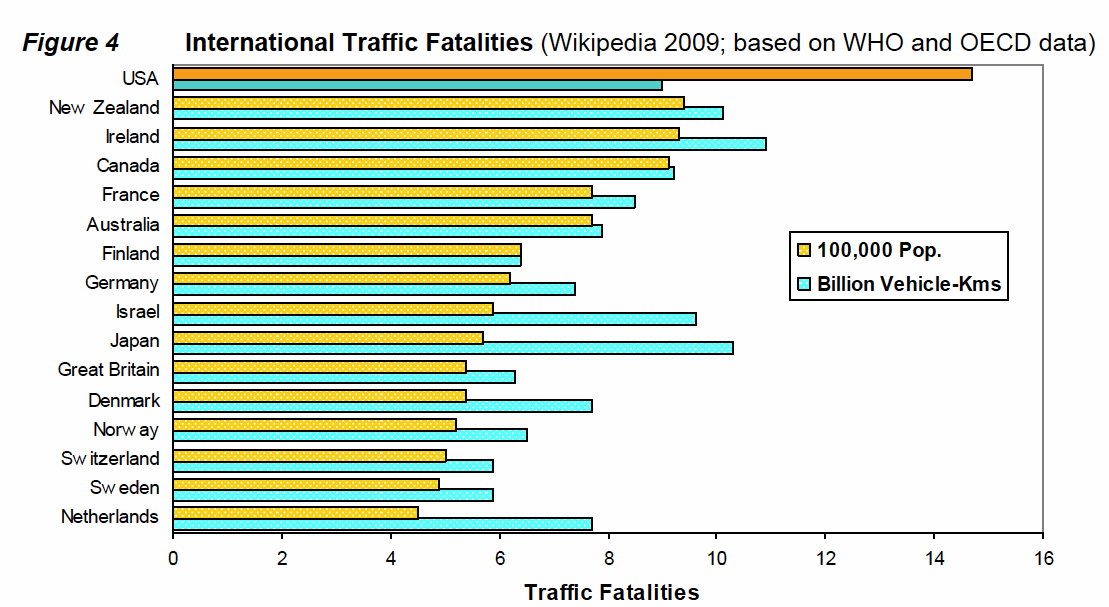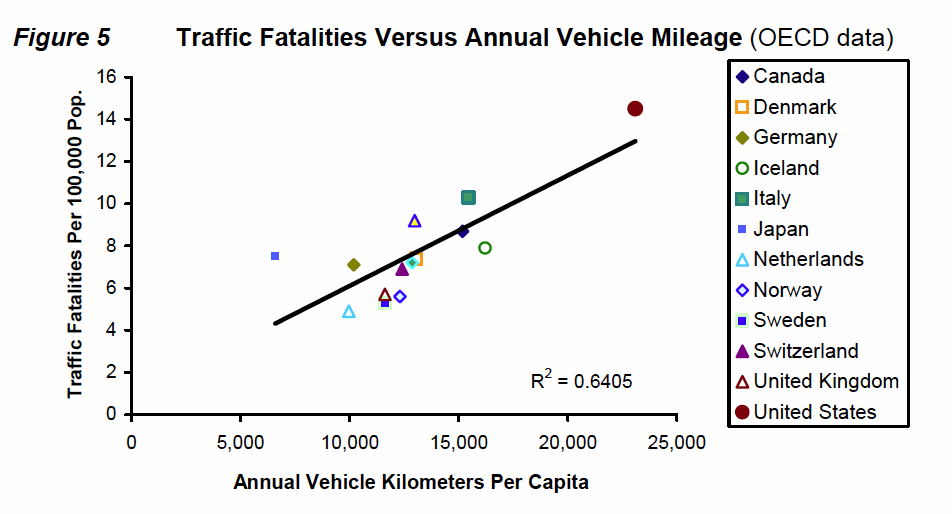AMERICAN PUBLIC TRANSPORTATION ASSOCIATION
VICTORIA TRANSPORT POLICY INSTITUTE
Summary of Findings
- High quality public transportation (convenient, comfortable, fast rail and bus transport) and transit oriented development (walkable, mixed-use communities located around transit stations) tend to affect travel activity in ways that provide large health benefits, including reduced traffic crashes and pollution emissions, increased physical fitness, improved mental health, improved basic access to medical care and healthy food and increased affordability which reduces financial stress to lower-income households.
- Traffic casualty rates tend to decline as public transit travel increases in an area. Residents of transit-oriented communities have only about a quarter the per capita traffic fatality rate as residents of sprawled, automobile-dependent communities.
- Public transit reduces pollution emissions per passenger-mile, and transit-oriented development provides additional emission reductions by reducing per capita vehicle travel.
- U.S. Center for Disease Control recommends that adults average at least 22 daily minutes of moderate physical activity, such as brisk walking, to stay fit and healthy. Although less than half of American adults achieve this target, most public transportation passengers do exercise the recommended amount while walking to and from transit stations and stops.
- Neighborhood design features that support transit, such as walkability and mixed land use, also support public health. Of people with safe places to walk within ten minutes of home, 43% achieve physical activity targets, compared with just 27% of less walkable area residents.
- The United States has relatively poor health outcomes and high healthcare costs compared with peers, due in part to high per capita traffic fatality rates and diseases resulting from sedentary living. Public transit improvements can improve health outcomes and reduce healthcare costs.
- Inadequate physical activity contributes to numerous health problems, causing an estimated 200,000 annual deaths in the U.S., and significantly increasing medical costs. Among physically able adults, average annual medical expenditures are 32% lower for those who achieve physical activity targets ($1,019 per year) than for those who are sedentary ($1,349 per year).
- Many physically and economically disadvantaged people depend on public transportation to access to medical services and obtain healthy, affordable food.
- Current demographic and economic trends (aging population, rising fuel prices, increasing health and environmental concerns, and rising medical care costs) are increasing the value of public transportation health benefits.
- A growing portion of households would prefer to drive less and rely more on walking, cycling and public transit, provided these alternatives are convenient, comfortable, safe and affordable.
- Conventional planning tends to overlook and undervalue many transportation-related health impacts. More comprehensive evaluation can better integrate transportation and public health planning objectives.
- When all impacts are considered, improving public transit can be one of the most cost effective ways to achieve public health objectives, and public health improvements are among the largest benefits provided by high quality public transit and transit-oriented development.
Download full report (PDF): Evaluating Public Transportation Health Benefits
About American Public Transportation Association
www.apta.com
“APTA is a nonprofit international association of 1,500 member organizations including public transportation systems; planning, design, construction and finance firms; product and service providers; academic institutions; and state associations and departments of transportation…APTA and its members and staff work to ensure that public transportation is available and accessible for all Americans in communities across the country.”
About Victory Transport Policy Institute
www.vtpi.org
“The Victoria Transport Policy Institute is an independent research organization dedicated to developing innovative and practical solutions to transportation problems.”
Tags: Accidents, American Public Transportation Association, APTA, Health, Todd Litman, Traffic, Victoria Transport Policy Institute, VTPI








 RSS Feed
RSS Feed